Most of us never think about the purpose of nest box material for our backyard chickens, but the topic deserves some consideration because most of us are getting it wrong. The primary purposes of nesting material are to protect eggs from breakage when hens lays them and facilitate cleaning of the nest box. Because a hen squats when laying eggs, (check out my video of it here!) nest bottoms should be cushioned to prevent shells from breaking as eggs drop from a hen’s vent.
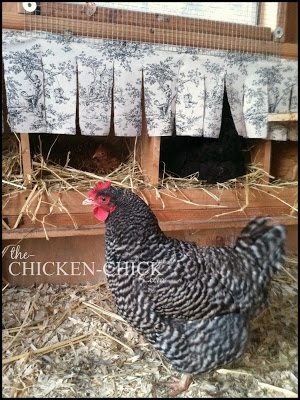
When I began keeping chickens, I mistakenly believed I was supposed to use straw in the nest boxes without understanding the purpose of nesting material. I quickly found that my hens scratched and kicked-out most of the straw from the nest boxes, leaving a hollow in the center of the box exposing bare wood, resulting in no protection from breakage for the eggs. Long strands of golden straw make a lovely, rustic-looking nest for photographing eggs, but regular straw does not perform well in nest boxes or in chicken coops in general. Two of the most common, nesting materials are pine shavings and plastic nest pads.
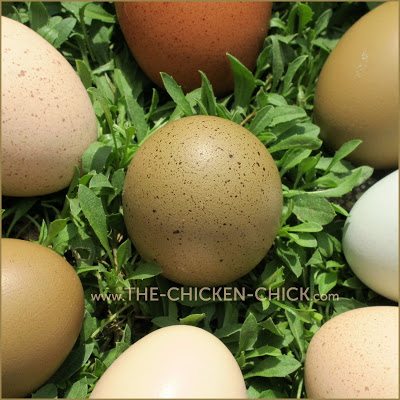
Hens do seem to enjoy rearranging nesting material, but its function is protecting eggs, not entertaining the hens. Some chicken keepers mistakenly believe that nesting boxes should provide a comfortable seating area for hens, but nesting material is not intended to provide a cozy sanctuary for hens to settle in for the long-haul. If you have a broody hen who would like to spend all day sitting in a nest box, set her up for hatching success somewhere eggs aren’t going to be laid by other birds.
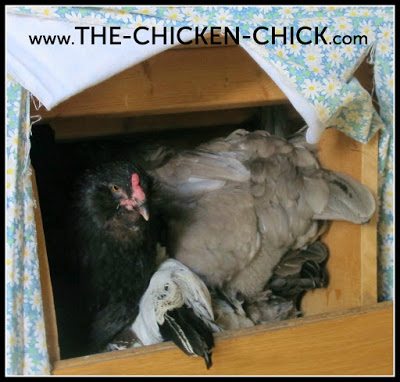
Broody hens should be located where they cannot interfere with laying hens’ daily work.
Eggs that have a soft spot to land will be less likely to break than those that drop onto the bottom of a hard nest box. I use plastic nest pads and bottoms. The plastic nest pads cannot be easily kicked out of the nest by hens, they protect eggs from breakage, are easy to clean in the event of a broken egg or soiled with poop, and are easily washed and sanitized. That’s a winning combination in my book!
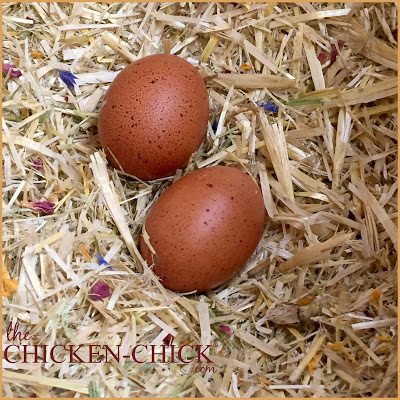
I enjoy the scent of Spruce the Coop® Herbal Fusion nest box herbs in my nest boxes, but the aromatherapy benefits are mostly for me! (more about nest box herbs below)
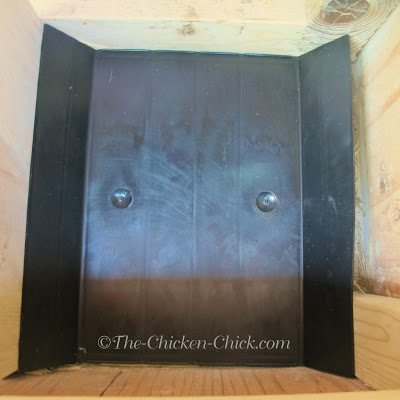
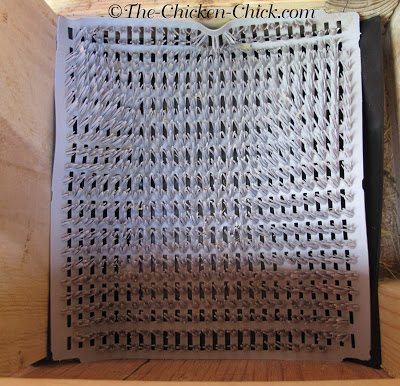
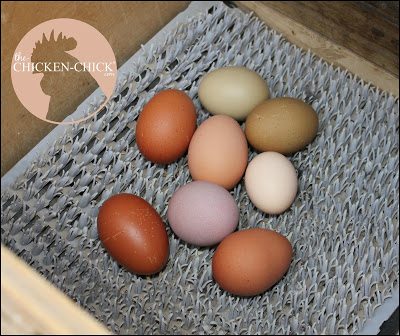
Plastic nest pads and bottoms.
Egg Eaters
Ensuring adequate nest box material reduces the likelihood of broken eggs in the nests, which can promote egg eating within a flock. Broken eggs in nest boxes are an invitation to hens to eat the broken eggs as well as break intact eggs. To further reduce the odds of hens producing weak or soft-shelled eggs, always provide laying hens with a nutritionally complete layer feed to avoid nutrient deficiencies, and offer a separate dish of oyster shells. Last, limit hens’ dietary extras to no more than 2 tablespoons of snacks / treats / fruits / veggies / table scraps per bird per day…and not every day.

While there are a variety of strategies to discourage and reform egg-eaters, which I discuss in this article, the best bet to protect eggs from being eaten by chickens is the use of rollout nest boxes. Roll out or roll-away nests allow eggs to roll gently down an incline into a covered tray as soon as they are laid. The hens can’t reach them and they wait patiently for you collect clean eggs each day.
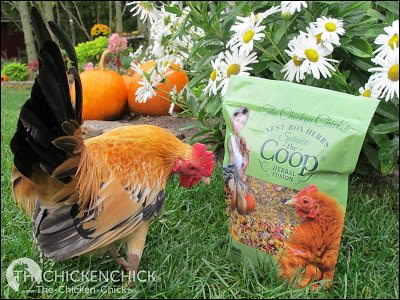
Spruce the Coop® Herbal Fusion Nest Box Herbs
Nest Box Herbs
Adding colorful, aromatic dried herbs and flowers to a nest box is a fun way to spruce up the coop, but beware of misleading claims that herbs tossed inside the coop or grown around it offer a wide array of beneficial properties that they do not provide (including: anti-inflammatory, antibacterial, antioxidant, antiparasitic, calming, laying stimulant, natural deworming, rodent-repelling, stress relieving- seriously?!). They don’t. If they did all those things, not only would we all make nest herbs an essential coop staple, but so would the commercial egg laying industry. At best, the strong scents of dried herbs and flowers may offend some smaller insects, but it does not repel, offend, alarm, discourage mites or lice from infesting your hens.
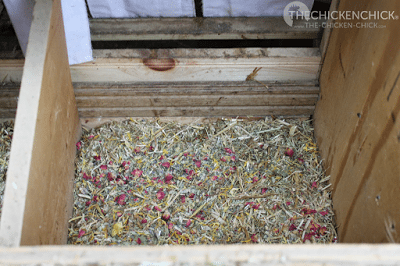
A word of caution: The warmth and humidity from a hen’s body can hasten decomposition and encourage mold growth in both fresh herbs and straw, so avoiding both inside nest boxes is advisable.
Dried aromatic herbs and flowers spruce up nesting material and smell heavenly!
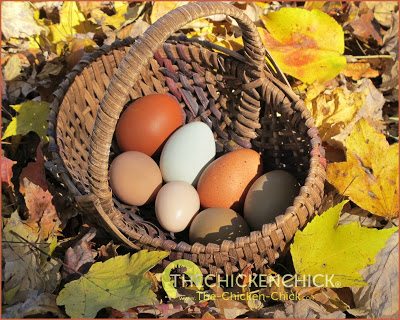
Kathy Shea Mormino
Affectionately known internationally as The Chicken Chick®, Kathy Shea Mormino shares a fun-loving, informative style to raising backyard chickens. …Read on


shop my SPONSORS
Most of us never think about the purpose of nest box material for our backyard chickens, but the topic deserves some consideration because most of us are getting it wrong. The primary purposes of nesting material are to protect eggs from breakage when hens lays them and facilitate cleaning of the nest box. Because a hen squats when laying eggs, (check out my video of it here!) nest bottoms should be cushioned to prevent shells from breaking as eggs drop from a hen’s vent.

When I began keeping chickens, I mistakenly believed I was supposed to use straw in the nest boxes without understanding the purpose of nesting material. I quickly found that my hens scratched and kicked-out most of the straw from the nest boxes, leaving a hollow in the center of the box exposing bare wood, resulting in no protection from breakage for the eggs. Long strands of golden straw make a lovely, rustic-looking nest for photographing eggs, but regular straw does not perform well in nest boxes or in chicken coops in general. Two of the most common, nesting materials are pine shavings and plastic nest pads.

Hens do seem to enjoy rearranging nesting material, but its function is protecting eggs, not entertaining the hens. Some chicken keepers mistakenly believe that nesting boxes should provide a comfortable seating area for hens, but nesting material is not intended to provide a cozy sanctuary for hens to settle in for the long-haul. If you have a broody hen who would like to spend all day sitting in a nest box, set her up for hatching success somewhere eggs aren’t going to be laid by other birds.

Broody hens should be located where they cannot interfere with laying hens’ daily work.
Eggs that have a soft spot to land will be less likely to break than those that drop onto the bottom of a hard nest box. I use plastic nest pads and bottoms. The plastic nest pads cannot be easily kicked out of the nest by hens, they protect eggs from breakage, are easy to clean in the event of a broken egg or soiled with poop, and are easily washed and sanitized. That’s a winning combination in my book!

I enjoy the scent of Spruce the Coop® Herbal Fusion nest box herbs in my nest boxes, but the aromatherapy benefits are mostly for me! (more about nest box herbs below)



Plastic nest pads and bottoms.
Egg Eaters
Ensuring adequate nest box material reduces the likelihood of broken eggs in the nests, which can promote egg eating within a flock. Broken eggs in nest boxes are an invitation to hens to eat the broken eggs as well as break intact eggs. To further reduce the odds of hens producing weak or soft-shelled eggs, always provide laying hens with a nutritionally complete layer feed to avoid nutrient deficiencies, and offer a separate dish of oyster shells. Last, limit hens’ dietary extras to no more than 2 tablespoons of snacks / treats / fruits / veggies / table scraps per bird per day…and not every day.

While there are a variety of strategies to discourage and reform egg-eaters, which I discuss in this article, the best bet to protect eggs from being eaten by chickens is the use of rollout nest boxes. Roll out or roll-away nests allow eggs to roll gently down an incline into a covered tray as soon as they are laid. The hens can’t reach them and they wait patiently for you collect clean eggs each day.

Spruce the Coop® Herbal Fusion Nest Box Herbs
Nest Box Herbs
Adding colorful, aromatic dried herbs and flowers to a nest box is a fun way to spruce up the coop, but beware of misleading claims that herbs tossed inside the coop or grown around it offer a wide array of beneficial properties that they do not provide (including: anti-inflammatory, antibacterial, antioxidant, antiparasitic, calming, laying stimulant, natural deworming, rodent-repelling, stress relieving- seriously?!). They don’t. If they did all those things, not only would we all make nest herbs an essential coop staple, but so would the commercial egg laying industry. At best, the strong scents of dried herbs and flowers may offend some smaller insects, but it does not repel, offend, alarm, discourage mites or lice from infesting your hens.

A word of caution: The warmth and humidity from a hen’s body can hasten decomposition and encourage mold growth in both fresh herbs and straw, so avoiding both inside nest boxes is advisable.
Dried aromatic herbs and flowers spruce up nesting material and smell heavenly!




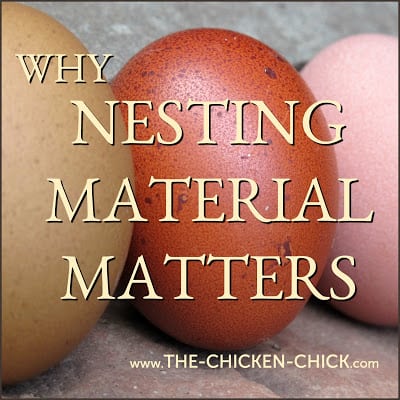













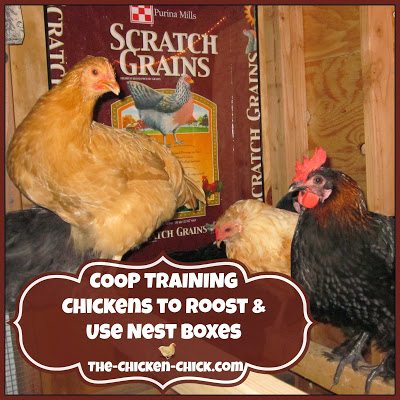
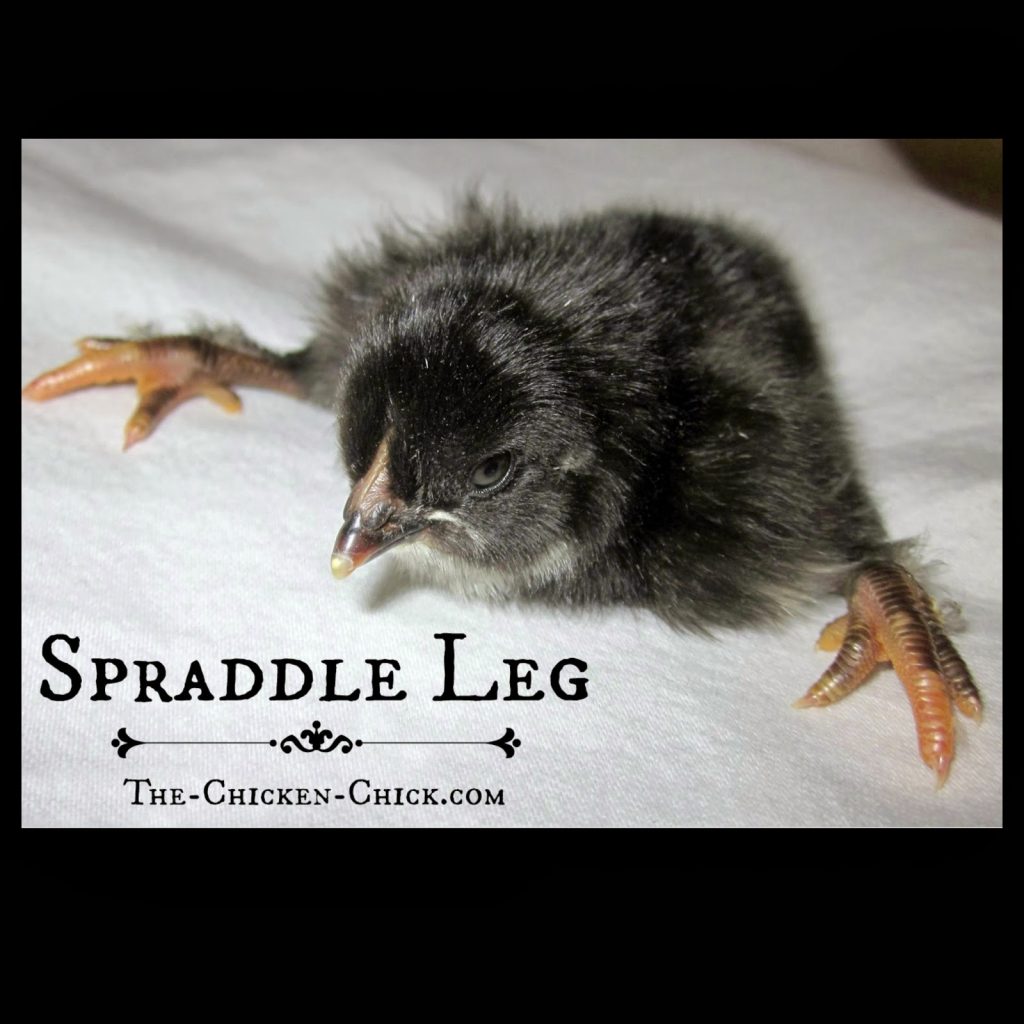
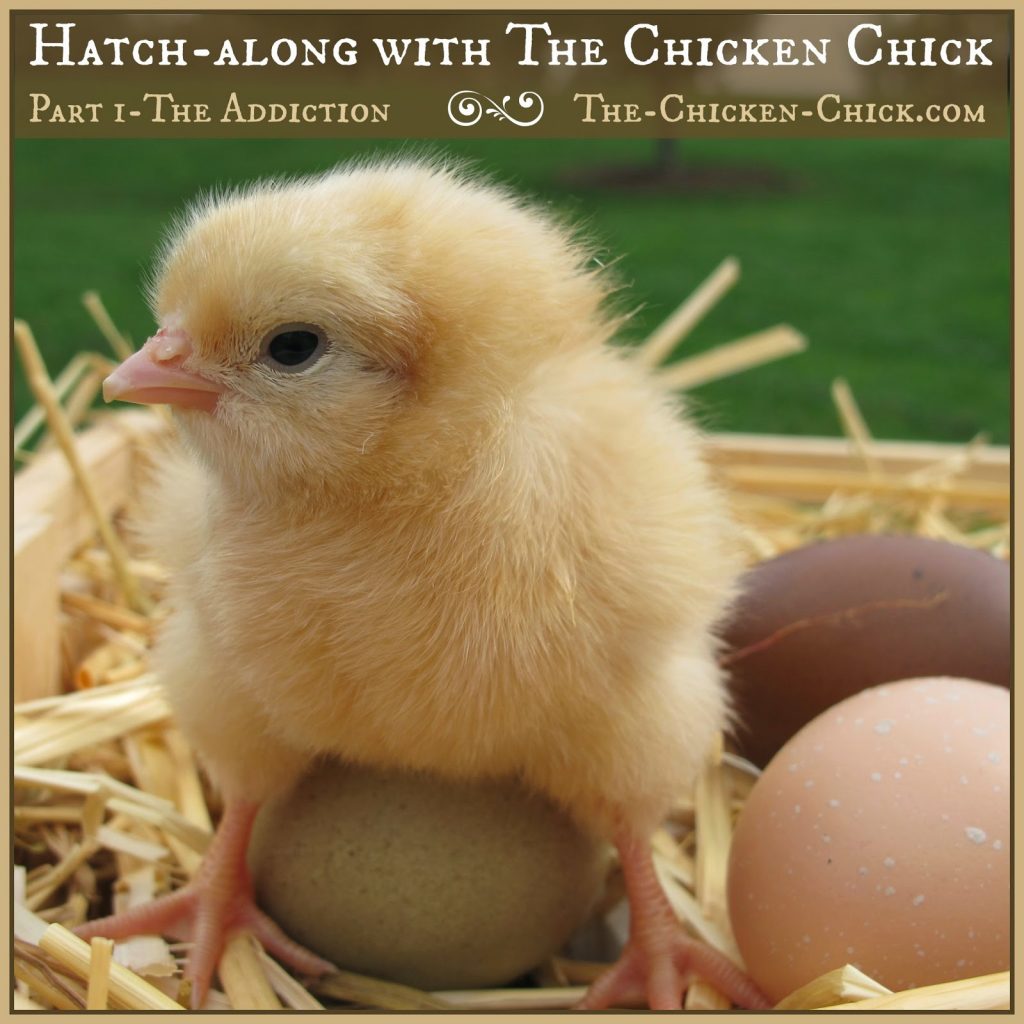









Hey there! Do you have thoughts on using coffee chaff as bedding? It’s a by product of making coffee and a local roaster near me said they’d be happy to give it to me free of charge, but I can’t find many resources on its safety for chickens. Whatever you can let me know is helpful! (Also apologies I accidentally replied to Melissa’s comment below first but meant for this to be its own comment and not a reply.)
I wouldn’t even use it in my coops if it was given to me free of charge- I cannot believe it would be safe if the birds were to eat it and would not risk my hens’ health on it. Finally, sand or pine shavings are far better choices to use for litter. I prefer sand. More information on that topic here:
https://the-chicken-chick.com/chicken-coop-bedding-sand-litter/
Nesting box access??Should chickens have access to nesting boxes all day? Just in the mornings? My nesting boxes have a top that will come down to close off access. But what times should they be open for my hens. I have a garage under the guest house which I converted to my night time coop. That is where my nesting boxes are. But I have a large fenced in enclosure they are in during the day, but while in there they do not have access to the boxes.
All day.
I am a new chicken princess. I have a dozen mixed variety chicks, 7 weeks old. Excuse me, one hen turned out to be a rooster …. They’ve been in the coop one week.
I have construction sand in the coop which works well. Once they eat all the grass in the run I hope to put sand in there too.
How do I clean under the raised coop?
Also, I never see any dust bathing in dirt run or sand coop.
When do I add oyster shells? They are 7 weeks old.
Use a rake to get underneath the coop to clean it.
NO oyster shells for chicks- it will give them kidney damage. When you switch from starter feed to layer feed at 18 weeks old, THEN offer oyster shells to the laying hens in a SEPARATE dish, do not mix it into their feed. They will eat it only when they know they need it.